I’ve seen countless trends come and go in the world of yoga accessories.
But let me tell you, the increase in recycled yoga mats is one trend that’s here to stay (and eventually take over) – and with good reason!
Not only are these mats better for our planet, but they’re also becoming increasingly popular among my students.
It warms my heart to see so many yogis embracing sustainability in their practice.
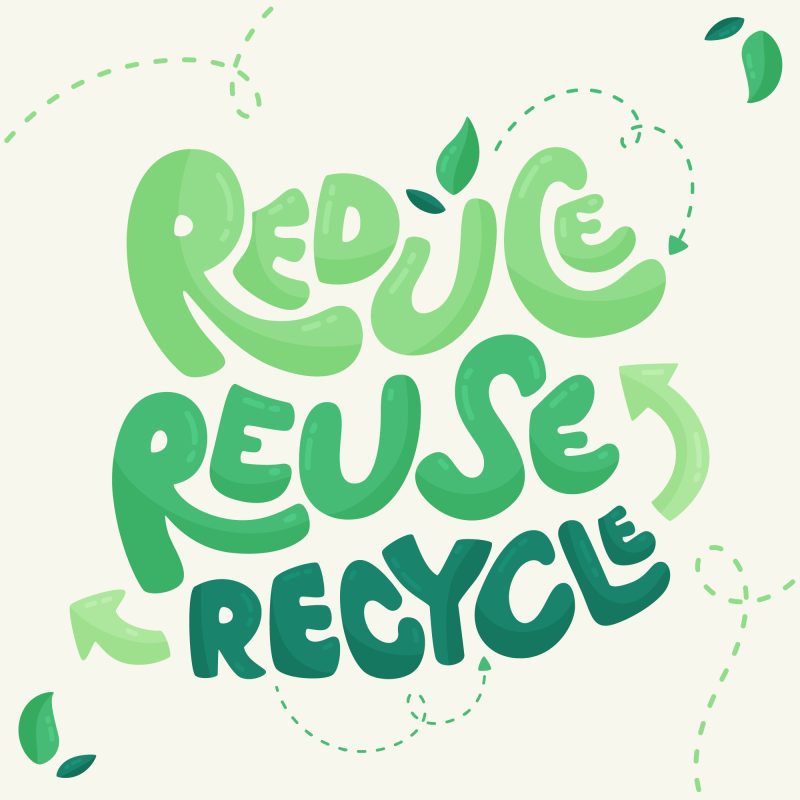
Why Use Recyled Yoga Mats?
Sustainable Wellness
In my classes I’d say over the last year in particular, I’ve noticed a growing interest in sustainable wellness practices.
It’s not just about the poses anymore (ok, well of course it is) – students are increasingly conscious about the impact their yoga gear has on the environment.
This shift towards eco-friendly options is inspiring, and I’m thrilled to see more brands stepping up to meet this demand.
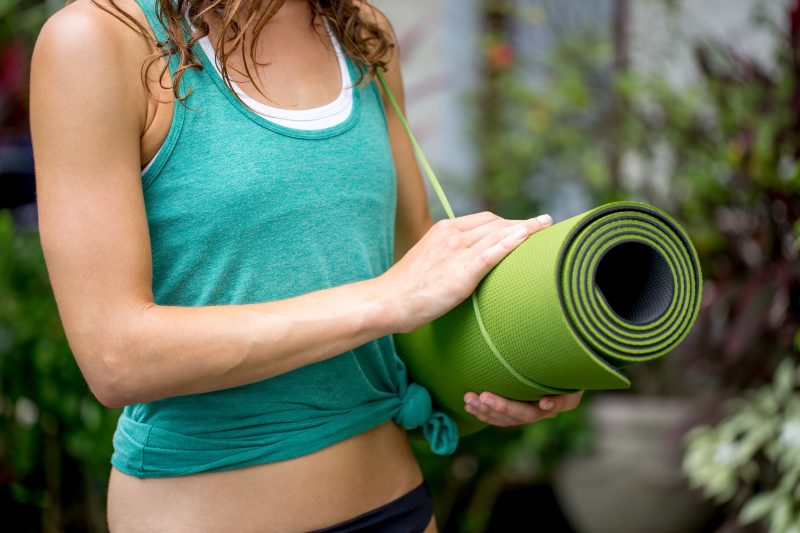
The Need for a Sustainable Yoga Mat
Let’s face it – traditional yoga mats have been a bit of an environmental nightmare.
As someone who’s gone through countless mats over the years (occupational hazard!), I’ve often felt guilty about the waste.
That’s why the move towards sustainable options is so crucial.
We need mats that not only support our practice but also support our values of environmental stewardship.
The Harm Yoga Mats Cause
Many conventional yoga mats are made from PVC, which is notoriously difficult to recycle.
What’s more, these mats often contain phthalates, which can have adverse health effects.
I remember when I first learned about these issues – it was a real wake-up call for me.
I started talking to my students about it too and most of them were shocked at how bad many yoga mats are for the environment.
As yoga practitioners, we strive for harmony with our bodies and the world around us.
Using mats that potentially harm both seems counterintuitive, doesn’t it?

Can You Recycle Yoga Mats?
This is a question I get a lot from my students.
The truth is, recycling traditional yoga mats can be tricky.
Not all recycling facilities can handle PVC, and even when they can, it’s not always economically viable.
However, there are some innovative programs out there.
For instance, Manduka’s LiveON program allows you to send in your old mat (any brand) when you purchase a new Manduka mat.
They then downcycle the old mat into things like carpet padding or animal shelter bedding. Pretty cool, right?
What is the Most Eco Friendly Yoga Mat Material?
In my experience, the most eco-friendly yoga mats are made from natural or recycled materials.
But here’s the thing – the best material for you will depend on your personal preferences and the type of yoga you practice.
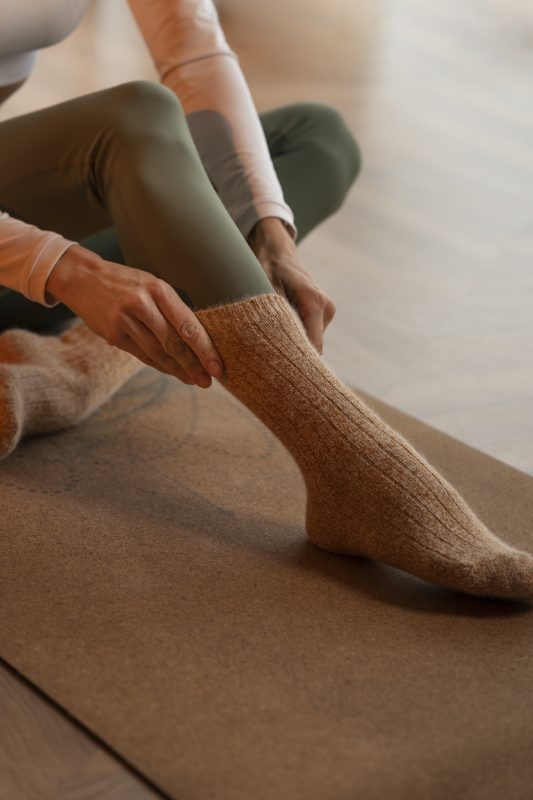
Some Examples of Sustainable Materials for Yoga Mats:
2. Cork
4. Jute
5. Recycled plastic
I’ve tried mats made from all of these materials, and each has its unique feel and benefits.
For instance, I absolutely love my cork mat for hot yoga sessions – it’s naturally antimicrobial and gets grippier as you sweat.
Talk about a win-win!
Cork: A Sustainable and Non-Toxic Yoga Mat
Speaking of cork, let me geek out for a moment about how awesome this material is.
Cork is harvested from the bark of cork oak trees without harming the tree itself.
The bark regenerates, making it a truly sustainable resource.
Plus, cork oak forests are biodiversity hotspots and significant carbon sinks.
Using a cork yoga mat feels like a small but meaningful way to contribute to environmental conservation.
Non-Toxic and Sustainable Yoga Mat Brands
There are so many great brands out there now offering eco-friendly yoga mats.
Some of my favorites include Liforme, Jade Yoga, and Manduka.
These companies are not only producing high-quality, sustainable mats but are also giving back to environmental causes.
It’s always a good day when I can recommend these brands to my students with confidence.
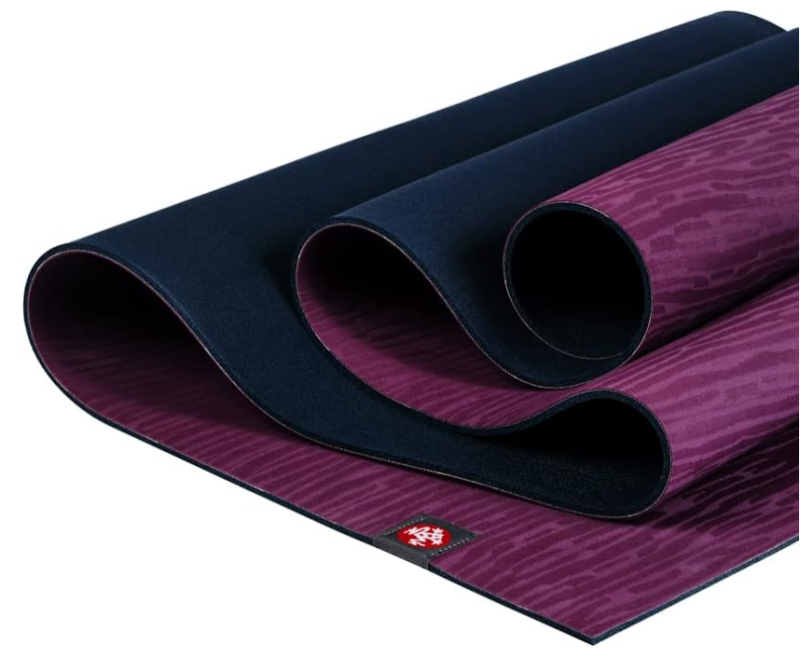
Which of These Options is the Best Yoga Mat for Hot Yoga?
From my experience teaching hot yoga, I’d say cork mats are fantastic for this style of practice.
Brands like Scoria, Yoloha, and Urbivore offer great cork options.
The natural properties of cork make it ideal for hot, sweaty sessions – it’s grippy, odor-resistant, and naturally antimicrobial.
Which Brand Offers the Best Non-Slip Yoga Mat?
For those of you who, like me, have a tendency to slip and slide in certain poses (I’m looking at you, downward dog!), finding a non-slip mat is crucial.
In my experience, Liforme and Jade Yoga offer excellent grip in both dry and wet conditions. That said, everyone’s needs are different, so it might take some trial and error to find your perfect match.
5 Ways to Reduce Your Carbon Footprint
While we’re on the topic of sustainability, here are a few tips I love sharing with anyone who’ll listen for reducing their carbon footprint beyond just their yoga mat choice:
1. Use a reusable water bottle
2. Walk or bike to your yoga class when possible
3. Choose organic, locally-sourced yoga wear
4. Practice outdoors when you can
5. Upcycle old yoga mats into other useful items
Non-Toxic Laundry Detergent
Another area where we can make eco-friendly choices is in how we clean our yoga gear.
I always recommend using non-toxic, biodegradable laundry detergents.
They’re better for our skin, our yoga clothes, and the environment.
Plus, they leave your yoga towels smelling fresh without that overpowering artificial scent.
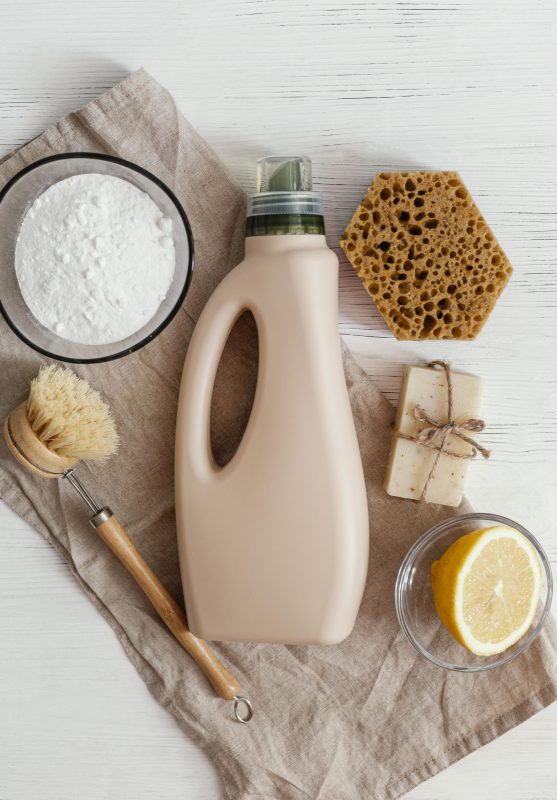
Glass or Plastic: Which is Better For The Environment?
This is a debate I often have with my more environmentally conscious students.
While glass is generally considered more eco-friendly as it’s infinitely recyclable, it’s also heavier to transport, which increases its carbon footprint.
Ultimately, the best choice is usually the one you’ll reuse the most.
In my studio, we opt for glass water dispensers, but I encourage students to bring whatever reusable bottle works best for them.

In conclusion, the world of recycled and eco-friendly yoga mats is expanding rapidly, offering us yogis more sustainable options than ever before.
As we continue our yoga journey, let’s remember that our practice extends beyond the mat – it’s about living in harmony with ourselves and our planet.
So next time you’re in the market for a new mat, why not give one of these eco-friendly options a try?
Your body, your practice, and our planet will thank you. Namaste!





